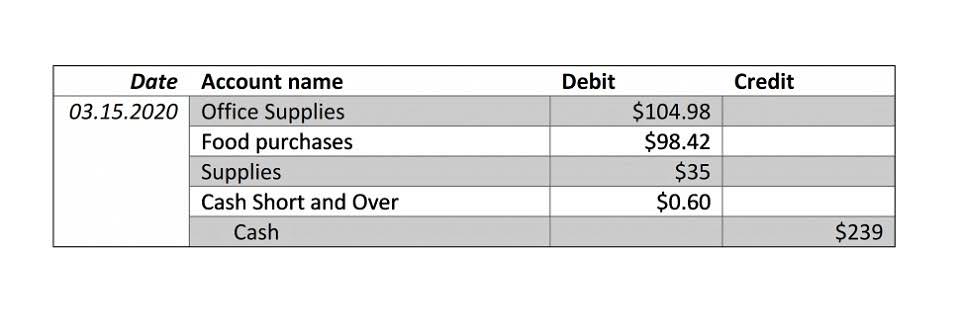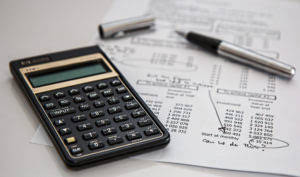
It allows you to look more closely at your finances over a specific period. For example, you can review your financial activity over the past year or shorten the time frame to the past 90 days. Without a detailed general ledger, your accounting can quickly become disorganized and inaccurate. Maintaining a general ledger is one of the best ways to gauge your business’s overall financial health.

How a General Ledger Works With Double-Entry Accounting Along With Examples
- The next step in the general ledger and financial reporting cycle is to prepare an unadjusted trial balance.
- Think of a ledger account as a bank statement for a specific aspect of a company’s finances.
- The accounts receivable process begins when a customer purchases goods or services from a company and is issued an invoice.
- Suppose you discover after reconciliation that certain amounts were not correctly recorded in your Ledger.
- In order to simplify the audit of accounting records or the analysis of records by internal stakeholders, subsidiary ledgers can be created.
- This is the place where you consolidate all cash inflow and outflow, purchases, sales information, and other journal entries.
This is so because you do not want to understate expenses in your financial statements for the next 12 months. Thus, General Ledger Reconciliation helps you to ensure accuracy of the information contained in your General Ledger Accounts. Thus, it forms the basis of your financial statements and helps you in evaluating the financial affairs of your firm.
Resources for Your Growing Business
- For example, a mistake resulting in an understatement of $1,000 in accounts payable could be offset by another mistake resulting in a $1,000 overstatement in revenues.
- Then, the balance of each of the General Ledger Accounts is posted in your Trial Balance Sheet.
- With a general ledger, you’ll record every transaction from the first day you go into business.
- The first three classifications are referred to as balance sheet accounts since the balances in these accounts are reported on the financial statement known as the balance sheet.
- So, if $1,000 was credited from the Assets account ledger, it would need to be debited to a different account ledger to represent the transaction.
The ledger contains accounts for all items listed in the accounting equation, i.e. assets, liabilities and equity. Of course equity includes capital, revenue, expenses, gains, losses, drawings, and retained earnings, so the ledger must at least include GL account codes for each of these groups. Understanding what an accounting ledger is and its importance to your business finances can help you organize and track transactions more easily.
General Ledger – GL Accounts
A business’ financial transactions are first recorded in a general journal. From there, the specific amounts are posted into the correct accounts within the general ledger. Sometimes referred to as a book of original entry, the general journal lists all financial transactions of a business, and the general ledger organizes and balances transactions. They provide an updated view of the company’s assets and liabilities, as well as how efficiently it manages cash. It would be difficult, to impossible, to identify any meaningful trends and patterns, much less prepare for the future, without the financial reporting enabled by general ledger accounting. When starting a small business, you may not know all of the important ins and outs of record keeping.
Generative AI in the Finance Function of the Future – BCG
Generative AI in the Finance Function of the Future.
Posted: Tue, 22 Aug 2023 07:00:00 GMT [source]
Each income statement account is closed in order to begin the next accounting year with a zero balance. The four remaining classifications of accounts are referred to as income statement accounts since the amounts in these accounts will be reported on the financial statement known as the income statement. The first three classifications are referred to as balance sheet accounts since the balances in these accounts are reported on the financial statement known as the balance sheet. Your general ledger might break these down into accounts for rent, merchant fees, software subscriptions, telephone and internet, cleaning, and so on.
- Thus, you record transactions in the ledger by classifying them under various account heads to which they relate.
- This is often the role of a bookkeeper or other accounting staff,” said Cross.
- The image below is a great illustration of how the blockchain distributed ledger works.
- In double-entry bookkeeping, each transaction will affect at least 2 accounts.
Your accounting software can automatically generate recurring journal entries when it’s appropriate. The general ledger acts as the backbone that supports the balance sheet, ensuring that the information presented is accurate and up-to-date. It provides the necessary details and supporting documentation for each account, allowing for a comprehensive understanding general ledger account of the company’s financial position. Beyond these essential documents, the general ledger is used to create a host of financial statements for the company, such as the annual report. These statements are audited by government agencies and accountants to ensure accuracy for the purposes of taxes, regulatory requirements, financing, and investment.
It’s how you get financial statements
This is done by comparing balances appearing on the Ledger Accounts to the original documents like bank statements, invoices, credit card statements, purchase receipts, etc. Furthermore, a General Ledger helps you to know the overall profitability and financial health of your business entity. In addition to this, the detailed information contained in General Ledgers helps you to do the audit smoothly. Operating Income is the income that you generate from your core business operations. Thus, operating income helps you to know your capacity to generate profits from your primary business activity.

